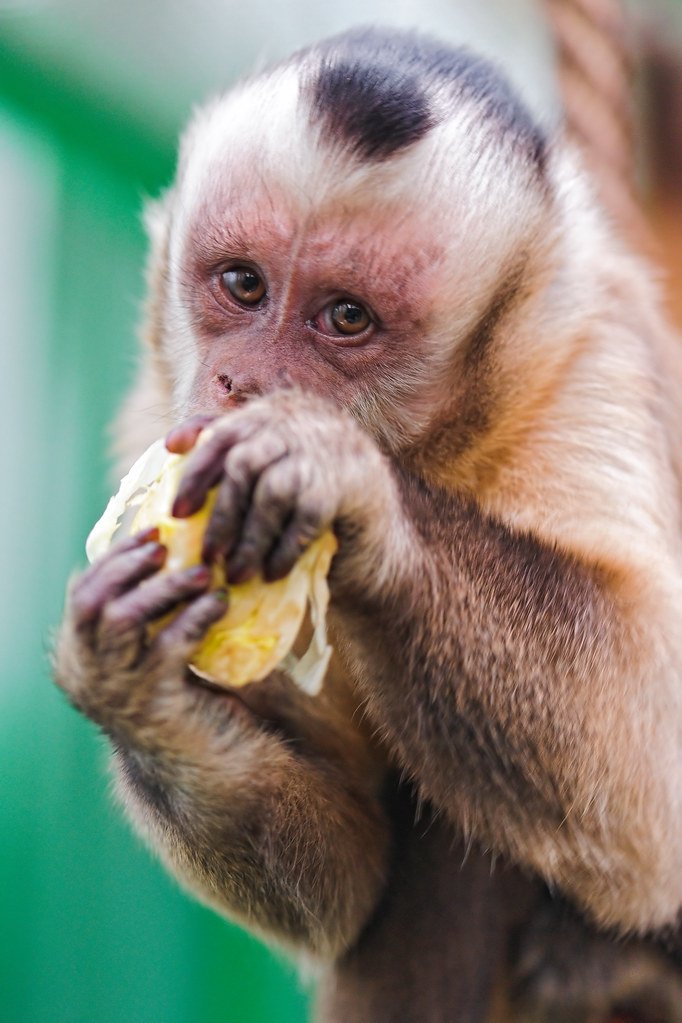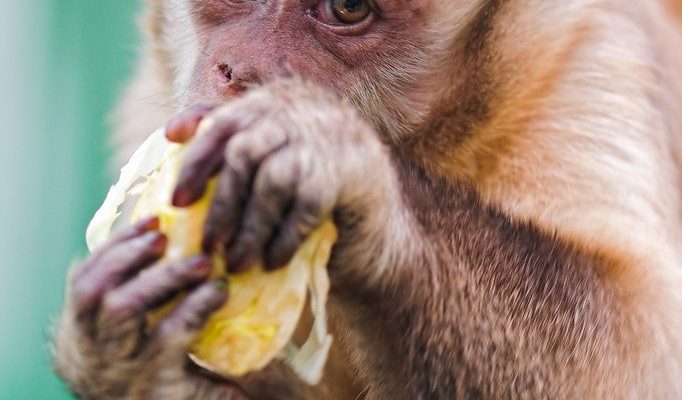
Capuchin monkeys belong to the New World monkey family and are found in Central and South America. Their diet is varied, consisting of fruits, insects, and even small animals. What’s more interesting is how they use their cleverness when it comes to hunting. Here, we’ll take a deeper dive into the *diet and hunting strategies of the capuchin monkey* and uncover some exciting facts about these remarkable creatures.
Understanding the Capuchin Monkey’s Diet
Capuchin monkeys are omnivores, which means they eat both plants and animals. Their diet can change based on the season and what’s available in their environment. Generally, they enjoy a wide range of foods, and here’s a closer look at what makes up their daily meals.
- Fruits: Capuchin monkeys love fruits like bananas, mangoes, and figs. These sweet treats provide them with the essential sugars and vitamins they need to stay active.
- Leaves and Flowers: Besides fruits, they also munch on various leaves and flowers. These help them get fiber and other nutrients.
- Insects: A significant part of their diet consists of insects like crickets, ants, and beetles. They’re a good source of protein!
- Small Animals: You might be surprised to learn that capuchins sometimes go after small animals, like birds or lizards. This adds some diversity to their meals.
You might be wondering why they have such a varied diet. Well, capuchin monkeys live in dense forests that provide many food sources. Their flexible eating habits help them adapt to changing environments, ensuring they always find something to eat. This adaptability is key to their survival.
Hunting Techniques of Capuchin Monkeys
Capuchin monkeys don’t just wait for food to come to them; they’re skilled hunters. They use various strategies to gather food, showing off their intelligence and teamwork skills. Here are some common methods they employ:
- Tool Use: One of the most impressive skills of capuchins is their ability to use tools. They can use sticks to extract insects from tree bark or even use stones to crack nuts. It’s like having a little toolbox right in the rainforest!
- Social Cooperation: Hunting often involves teamwork. These monkeys will band together to hunt for insects or small animals, increasing their chances of success. Imagine a mini hunting party where everyone plays their part.
- Observation: Capuchins are curious and smart. They watch other animals to learn where food is located. Sometimes, they’ll follow other creatures to find hidden food sources.
These strategies not only keep their bellies full but also strengthen social bonds within their groups. It’s a win-win situation for these clever primates!
The Role of Foraging in Their Diet
Foraging is an essential part of the capuchin monkey’s lifestyle. It’s the process of searching for and gathering food, and these monkeys have perfected it. They spend a significant amount of their day foraging to find tasty treats.
Capuchins are known for being opportunistic feeders. This means they’ll take advantage of whatever is available. Sometimes, they’ll forage alone, but more often than not, they’ll do it in groups. This behavior allows them to be efficient and increases their chances of finding enough food.
While foraging, capuchins use their sharp minds and senses. They can identify ripe fruits by smell or spot insects hiding in the bark of a tree. Here’s a fun fact: their excellent memory helps them remember which trees produce the best fruits and the locations of their favorite foraging spots. It’s like having a secret menu in their memory bank!
Seasonal Variation in Diet
Capuchin monkeys are very much in tune with their environment and the changing seasons. Their diet varies throughout the year based on what is available. During certain times, fruits may be plentiful, while in others, they might rely more on insects or leaves.
In the wet season, fruits are abundant, and you’ll find capuchins feasting on ripe bananas and mangoes. However, during the dry season, when fruits are scarce, they switch their focus to other food sources like insects or roots. This dietary flexibility helps them survive in challenging conditions.
The ability to adapt their diet with the seasons showcases the cleverness of capuchin monkeys. It’s like they have an instinctual calendar that tells them what’s good to eat at different times of the year!
Impact of Habitat on Diet and Hunting
The capuchin monkey’s habitat plays a significant role in shaping their diet and hunting strategies. Relaxed in the canopies of rainforests, these monkeys have access to a wide variety of food sources that keep their diets diverse.
Rainforests provide shelter, fruits, and insects, making it an ideal environment for capuchins. However, as deforestation and habitat destruction increase, these monkeys face challenges finding food. With fewer trees, they might have to travel further to find their favorite meals, which can be both exhausting and dangerous.
Conservation efforts are essential for protecting their habitats. Ensuring that capuchin monkeys have access to healthy environments not only benefits them but also maintains the balance of the ecosystem. When their home is safe, their diet and hunting strategies can thrive.
Capuchin Monkeys: A Reflection of Nature’s Ingenuity
The diet and hunting strategies of capuchin monkeys are a testament to their intelligence and adaptability. They remind us how interconnected nature can be. Their playful antics and clever tools make them a joy to observe, but their survival skills tell a deeper story of resilience.
So, the next time you hear about capuchin monkeys or see them in a zoo, remember that there’s so much more happening behind those playful eyes. They’re not just munching on fruits—they’re navigating a complex world, solving problems, and using their wits to find food.
In summary, capuchin monkeys showcase how adaptability and intelligence shape diet and hunting strategies in the wild. From tool use to social cooperation, these little primates have much to teach us about survival and the delicate balance of nature.

